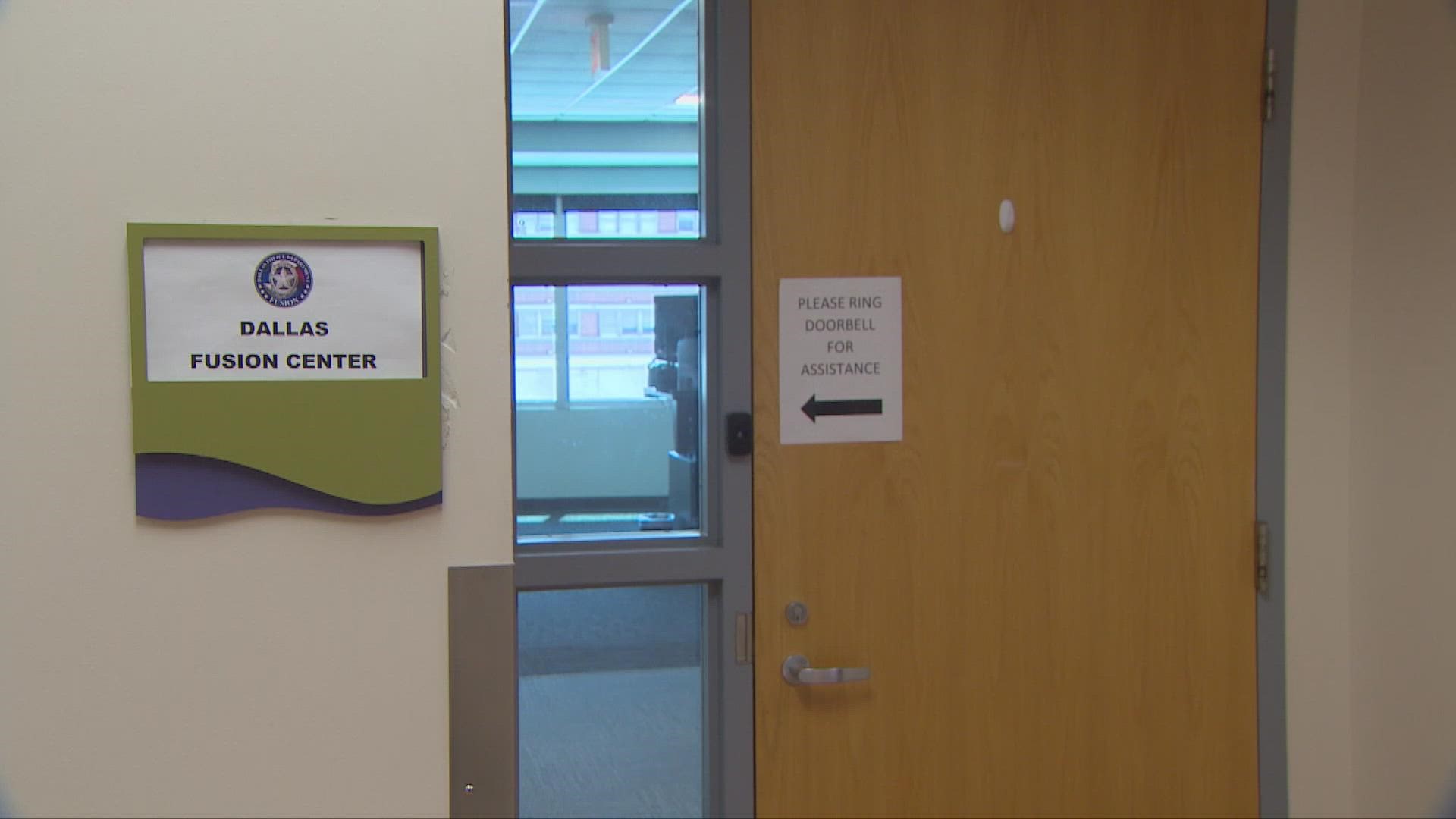DALLAS — In the wake of the May 24 mass shooting in Uvalde that claimed the lives of 21 people, including 19 children, many are wondering how law enforcement is tracking threats to public safety.
Dallas Police's Fusion Center is where detectives monitor threats to the public including gathering intelligence on possible mass shooters.
They launched new software that allows them even more access to social media posts and blogs.
"It allows us to filter and monitor in live time and we see alerts and make real-time decisions. If this is a credible threat and we vet it and look deeper into it and decide where we need to go with that threat," says Major Williams.
But police say they also rely on the public to come forward with information.
Richardson Police arrested a juvenile with a weapon near Berkner High School Wednesday after a woman called in saying she saw a man with a weapon walking toward the school.
"When you are seeing something you are just as important of a role as we are. You are the eyes of the police department," says Williams.
But law enforcement can't catch every threat. So, what happens when the shooter makes it onto a school campus?
Texas Republicans say there need to be more police resource officers or even arm teachers in schools through the guardian program.
"So, we are going to need people on the ground whether they are trained police officers or people who are trained in the school so the reaction time can be more quickly," says Ken Paxton, Texas Attorney General.
Former DISD Chief Craig Miller who also investigated more than 70 police-involved shootings while with the Dallas Police Department says arming teachers is not a good idea.
RELATED: These are the actions DFW school districts, police are taking in response to Uvalde school shooting
"In my mind, it is never a good idea to arm teachers, educators are put on campus to educate kids. I think that is their goal. That's their responsibility," says Miller.
In Uvalde, authorities say an officer confronted the suspect who was in full body armor almost immediately but couldn't stop him from entering the school. So, Miller says expecting a teacher to confront someone in that situation is asking a lot.
"I don't think that you are giving that same level of training to teachers and the expectations for them to be able to perform in a crisis moment would be difficult," says Miller.
Miller says the best way to prevent something like this is to increase school security and continue to put more resources into gathering information about potential threats.

